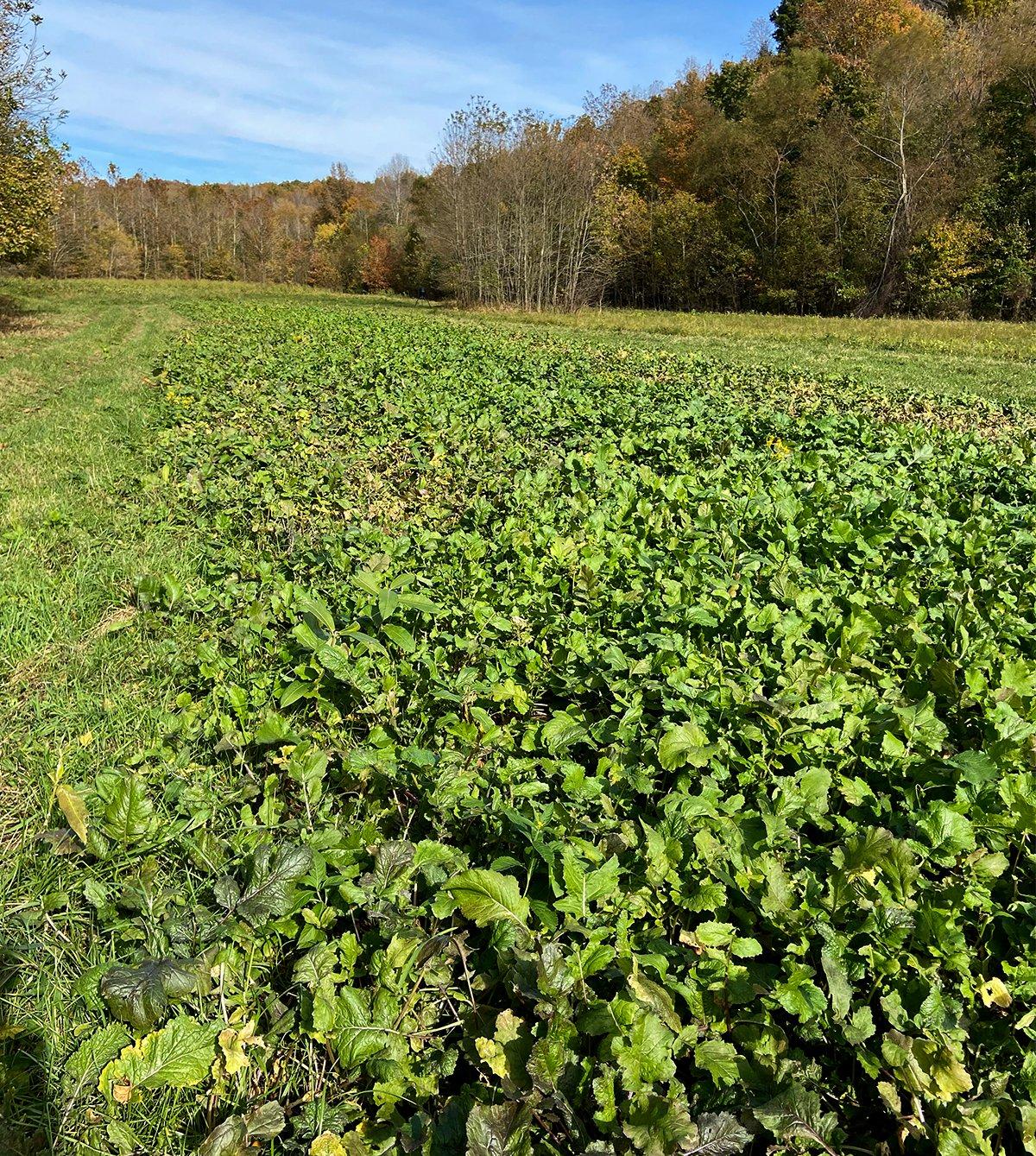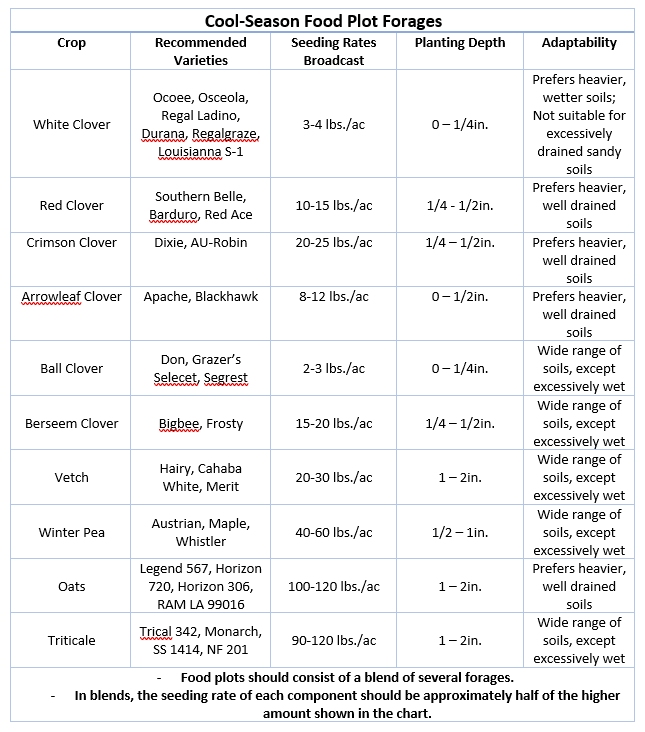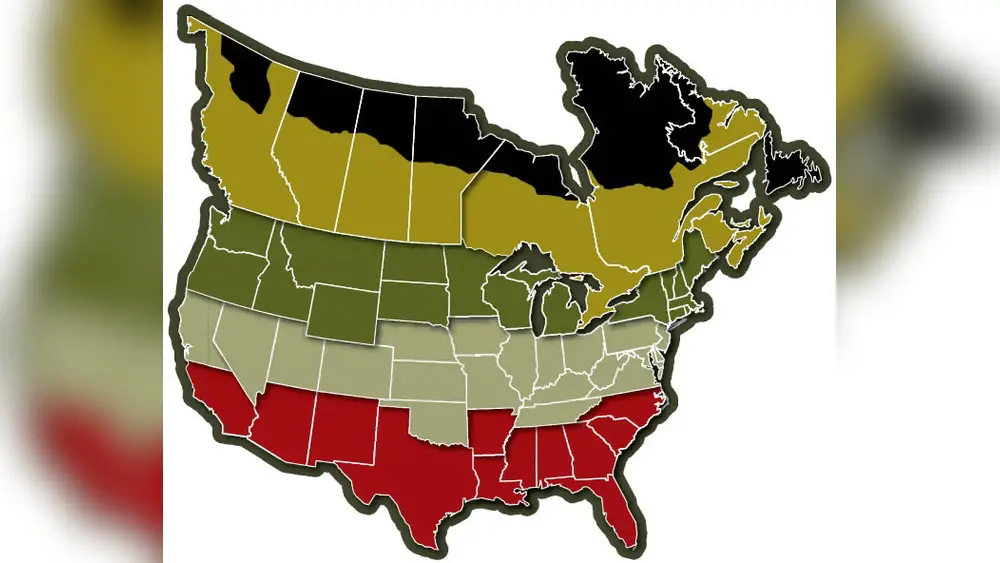If you’re thinking about planting a fall food plot in Northeast Florida, timing is everything. Plant too early or too late, and you might miss out on a healthy, thriving plot that attracts wildlife and supports your hunting or wildlife-watching goals.
But when exactly is the best time to plant? Knowing the right window can make all the difference in your food plot’s success. You’ll discover the ideal planting period, the types of seeds that work best for the region, and simple tips to prepare your soil for a strong start.
Keep reading to ensure your fall food plot flourishes and gives you the results you’re aiming for this season.
Northeast Florida Climate
Northeast Florida has a warm and humid climate. It offers a long growing season for many plants. Fall food plots thrive well here due to mild winters and plenty of rainfall. Understanding this climate helps choose the best planting time for a successful crop.
Frost Dates And Impact
Frost is rare in Northeast Florida and usually happens late in the season. The first frost typically occurs in mid to late November. This means plants have more time to grow before cold damage. Knowing frost dates helps avoid planting too early or too late. Early frost can kill young plants and reduce food plot success.
Temperature Patterns In Fall
Fall temperatures stay mild, often between 60 and 80 degrees Fahrenheit. These temperatures are ideal for seed germination and growth. Cooler nights slow growth but protect plants from heat stress. Warm days and cool nights create a good environment for fall crops. Monitoring temperatures supports choosing the right seed and planting time.
Ideal Planting Window
Timing is key for planting a successful fall food plot in Northeast Florida. The ideal planting window ensures seeds get enough warmth and moisture to sprout. Planting too early or too late can affect growth and food availability for wildlife. Understanding the best dates helps you maximize your plot’s yield and attractiveness to deer and other game.
Early Fall Planting Dates
Early fall planting usually begins in late September and runs through mid-October. This period offers warm soil temperatures that help seeds germinate quickly. Cool nights and moderate daytime temperatures support steady growth. Planting during this time gives crops more days to mature before colder weather arrives. Ideal seeds include cereal rye, oats, and clover, which thrive in these conditions. Early planting also helps plants build strong roots, improving survival through the winter.
Late Fall Planting Possibilities
Late fall planting is possible from mid-October to early November. Soil temperatures drop but remain warm enough for some seeds to sprout. Choose fast-growing and cold-tolerant seeds like cereal rye, wheat, or winter peas. These plants can handle light frosts and still provide good forage. Late planting requires good soil preparation to boost seed-to-soil contact and improve germination. Keep expectations realistic since growth will be slower and less dense than early plantings. Late plots still offer valuable food during peak hunting seasons.
Best Seeds For Fall Plots
Choosing the right seeds is vital for a successful fall food plot in Northeast Florida. The climate here allows planting a variety of seeds that thrive in cooler temperatures. Selecting seeds that suit the local weather and soil conditions ensures good growth and attracts wildlife. Seeds that tolerate cold and grow quickly help maximize your plot’s benefits during fall.
Cold-tolerant Grains
Cold-tolerant grains like cereal rye, oats, and wheat do well in fall plots. These grains start growing even when temperatures drop. They provide green forage for deer and other wildlife late into the season. Cereal rye is especially popular because it grows fast and stays green longer. Planting these grains early in fall gives them enough time to establish before colder weather arrives.
Legumes For Deer Attraction
Legumes such as Austrian winter peas and iron clay peas attract deer with their high protein content. These plants sprout quickly and are very palatable to wildlife. They fix nitrogen in the soil, improving soil health for future crops. Including legumes in your food plot mix creates a nutritious food source for deer during fall and early winter.
Quick-growing Options
Quick-growing seeds help when planting later in the season. Mustard, turnips, and radishes grow rapidly and provide early forage. These plants also attract deer with their bright colors and tasty leaves. Quick growth ensures your food plot is ready before hunting season peaks. They work well as a cover crop or mixed with grains and legumes for balanced nutrition.

Credit: realtree.com
Soil Preparation Tips
Preparing soil properly boosts your fall food plot’s success in Northeast Florida. Soil preparation sets the stage for seed growth and strong plants. Taking time to ready the soil helps seeds sprout evenly and grow healthy roots. This improves the overall yield and quality of your food plot.
Focus on creating a good environment for seeds. Loosen the soil and remove debris. This allows roots to spread and access nutrients easily. Good soil preparation also helps retain moisture, which is vital during dry spells.
Seedbed Preparation
Start by clearing the area of weeds and old plants. Use a rake or tiller to break up the soil into fine particles. A smooth, soft seedbed makes planting easier and helps seeds settle in well.
Remove rocks, sticks, and large clumps of dirt. These can block seed growth or cause uneven soil depth. Aim for a flat surface that allows water to spread evenly.
Test soil moisture before working it. Soil should be damp but not muddy. Wet soil can compact and damage its structure, hurting seedling growth.
Ensuring Seed-to-soil Contact
Good contact between seeds and soil is crucial for germination. Seeds need to touch soil firmly to absorb moisture and start growing. After planting, gently press the soil over the seeds using a roller or by walking carefully.
A cultipacker tool works well to press soil without crushing it. Avoid leaving large air pockets around seeds. These pockets can dry out the seeds or cause them to wash away with rain.
After firming the soil, water the area lightly. This helps settle soil around seeds and keeps them moist. Proper seed-to-soil contact increases the chance of fast and even sprouting.
Planting Techniques
Planting techniques play a crucial role in growing a successful fall food plot in Northeast Florida. Proper methods help seeds germinate well and produce healthy plants. The soil, seed distribution, and seed-to-soil contact must be carefully managed. Choosing the right technique can improve growth and yield.
Broadcasting Seeds
Broadcasting is a simple way to spread seeds over the soil surface. It works well for small plots or uneven ground. Spread seeds evenly by hand or with a spreader. After broadcasting, lightly rake or drag the soil to cover seeds. This helps protect seeds from birds and wind.
Broadcasting is quick and requires little equipment. It works best on well-prepared, loose soil. Make sure the soil is moist for better seed germination. Use a roller to press the seeds gently into the soil. This improves seed-to-soil contact and helps moisture absorption.
Using Drills And Rollers
Seed drills plant seeds directly into the soil at a uniform depth. This method improves seed placement and reduces seed waste. Drills create small furrows for seeds, then cover them as the machine moves. This protects seeds and helps them grow faster.
After drilling, use a roller to firm the soil around the seeds. Rolling removes air pockets and boosts moisture contact. This leads to better germination and stronger seedlings. Drills and rollers work well for larger plots and tougher soils. They help produce even and healthy crop growth.
Managing Late Plantings
Planting a fall food plot late in Northeast Florida requires smart management. Late plantings face challenges like shorter growing times and cooler weather. Adapting your approach helps still get good results. Focus on what is possible and use smart strategies to support your goals.
Late planting means less time for plants to grow strong before hunting season. You must plan carefully to make the most of the time left. Soil preparation and seed choice become even more important. Managing expectations helps avoid disappointment and keeps your efforts on track.
Adjusting Expectations
Late plantings will not grow as large or last as long as early ones. Expect smaller, quicker-growing plants. Choose seeds that sprout fast and handle cold better, like cereal rye or winter peas. These plants provide food quickly, even with limited time to grow.
Know that the plot may only support deer for a short hunting period. Focus on quality over quantity. A smaller plot with good forage can still attract deer and improve hunting success.
Maximizing Forage During Hunting Season
Use well-prepared soil to help seeds germinate fast. Firm, smooth soil keeps seeds in good contact for quick sprouting. Water the plot if rain is low to help plants grow.
Plant a mix of grains and legumes for varied nutrition. This mix attracts more deer and keeps them coming back. Keep an eye on the plot and control weeds to give your food plot the best chance to thrive during hunting season.
Common Challenges
Planting a fall food plot in Northeast Florida comes with its share of challenges. These hurdles can affect seed growth and the overall success of your plot. Understanding these common issues helps you plan better and improve results.
Weather Variability
Northeast Florida’s weather changes quickly during fall. Warm days can turn into cool nights fast. Sudden rainstorms or dry spells often appear without warning. These shifts can harm young plants or slow their growth. Soil moisture levels may rise or drop abruptly, affecting seed germination. Preparing for these changes is key to a healthy food plot.
Pest And Disease Concerns
Pests like insects and deer can damage your fall food plot. Bugs may eat seeds or young leaves. Deer and other wildlife might graze heavily, reducing your crop. Diseases can spread in damp conditions, common in fall. Fungal infections often attack weakened plants. Monitoring your plot often and acting early helps keep pests and diseases under control.

Credit: www.shadowhunterblinds.com
Additional Resources
Finding the right information can help you plant a successful fall food plot in Northeast Florida. Additional resources offer practical tips and local guidance. These tools can improve your planting results and help you understand the best timing and methods.
Recommended Videos
Videos show real planting steps and techniques. They make it easier to follow instructions. Watching experts prepare soil and plant seeds helps you avoid common mistakes. Visual guides cover topics like seed selection, soil preparation, and planting timing. They also explain how to care for the plot after planting. These videos are easy to understand and perfect for beginners.
Local Extension Services
Local extension services provide advice tailored to Northeast Florida. They know the climate and soil conditions well. You can get help with soil testing and seed recommendations. Extension agents also offer planting calendars based on local weather patterns. They answer questions about pest control and plant health. Their support ensures your food plot thrives during the fall season.

Credit: nwdistrict.ifas.ufl.edu
Frequently Asked Questions
When To Plant Fall Food Plots In Florida?
Plant fall food plots in Florida from late September to November. Southern climates allow later planting, even into November. Choose fast-growing seeds like cereal rye or winter peas. Prepare soil well for good seed-to-soil contact. Early planting ensures better growth, but late planting still supports hunting needs.
Is October Too Late To Plant A Food Plot?
October is not too late to plant a food plot in southern regions with mild frost. Choose fast-growing, cold-tolerant seeds like cereal rye. Prepare soil well and plant before the first frost. Expect less growth than earlier plantings but still provide valuable forage for late-season hunting.
When To Plant Fall Crops In Florida?
Plant fall crops in Florida from late September to early November. Southern Florida allows later planting due to milder frosts. Choose fast-growing, cold-tolerant seeds like cereal rye or oats for best results. Prepare soil well for good seed contact and expect moderate growth before colder weather.
What Is The Best Food Plot To Plant In The Fall?
The best fall food plots include cereal rye, wheat, oats, and legumes like Austrian winter peas. These grow fast and tolerate cold. Prepare soil well and plant early for optimal growth before frost. These crops attract deer and provide reliable forage during hunting season.
Conclusion
Planting your fall food plot in Northeast Florida at the right time matters. Early October offers the best chance for healthy growth. Choose fast-growing seeds like cereal rye or winter peas for later planting. Prepare the soil well to help seeds sprout and grow.
Remember, planting too late may reduce growth but can still provide food for deer. Watch the weather and frost dates closely. With careful timing, your fall plot will support local wildlife during hunting season. Start planning early for the best results in Northeast Florida’s climate.

